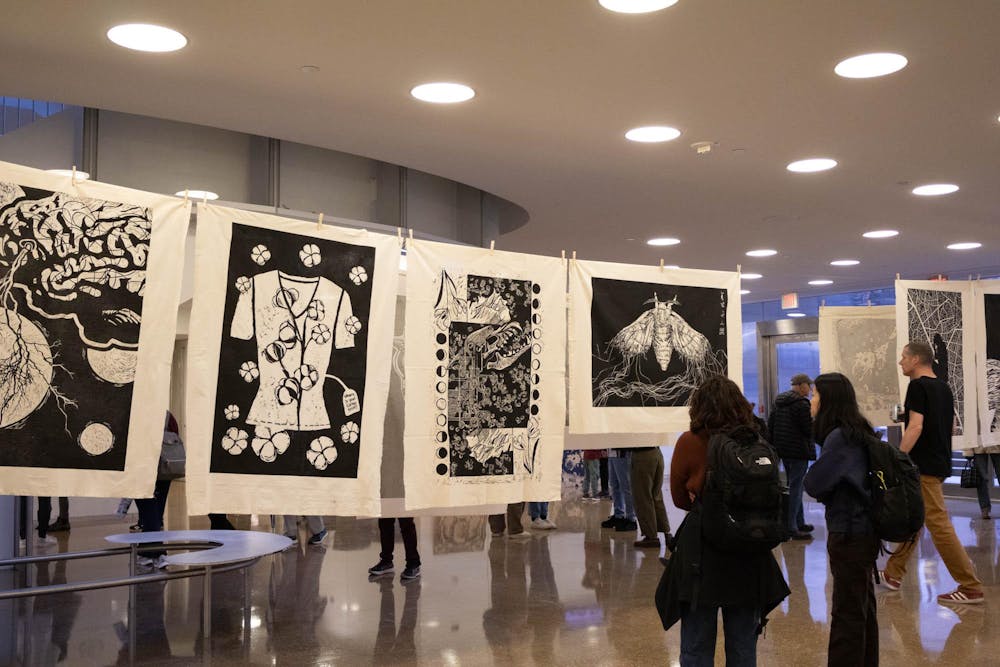Science-based artwork of varied colors, sizes and subjects — from the Black Death to the Great Dismal Swamp —hung along the walls of the Genome Sciences Building lobby for a one-day exhibition on Friday evening.
The show, "Artist/Scientist: Printmaking and Biology,” displayed works by students in Studio Art 409: Art and Science: Merging Printmaking and Biology. The undergraduate honors course was co-taught in the fall by art professor Beth Grabowski and biology professor Bob Goldstein.
The class was first taught in fall 2018 and enrolls 14 students who have completed a 200-level course in biology or studio art, with seven slots for students of each discipline. The course teaches students about the similarities between art and science, as well as their differences.
“I don’t think we are all that different, to be honest — I think science, as much as people might not think about it in this way, but it’s actually a very creative field,” Grabowski said. “You have to be aware, and you have to be willing to find what you’re not looking for.”
Students were assigned three art projects based in scientific research that allowed them to explore topics they were curious about, Goldstein said.
Micro-macro, the first project, required students to use a microscope to examine small objects of interest, like patterns in cloth, and make art from what they see. They used traditional microscopes, but also built smartphone or tablet-based ones.
“The art students often end up getting pictures in the microscopes that I often think, ‘Wow, I never would have thought of using it that way to see that kind of thing,'” Goldstein said.
Students also carved woodcuts used for printing that measured almost 4 feet by 3 feet as part of the first project.
Senior biostatistics and studio art double major Isabella Gamez’s woodcut and print “Dance Macabre” was showcased at the exhibition. The work was inspired by the Dance of Death, a 14th-century motif popularized by the Black Death and associated with dancing skeletons.



